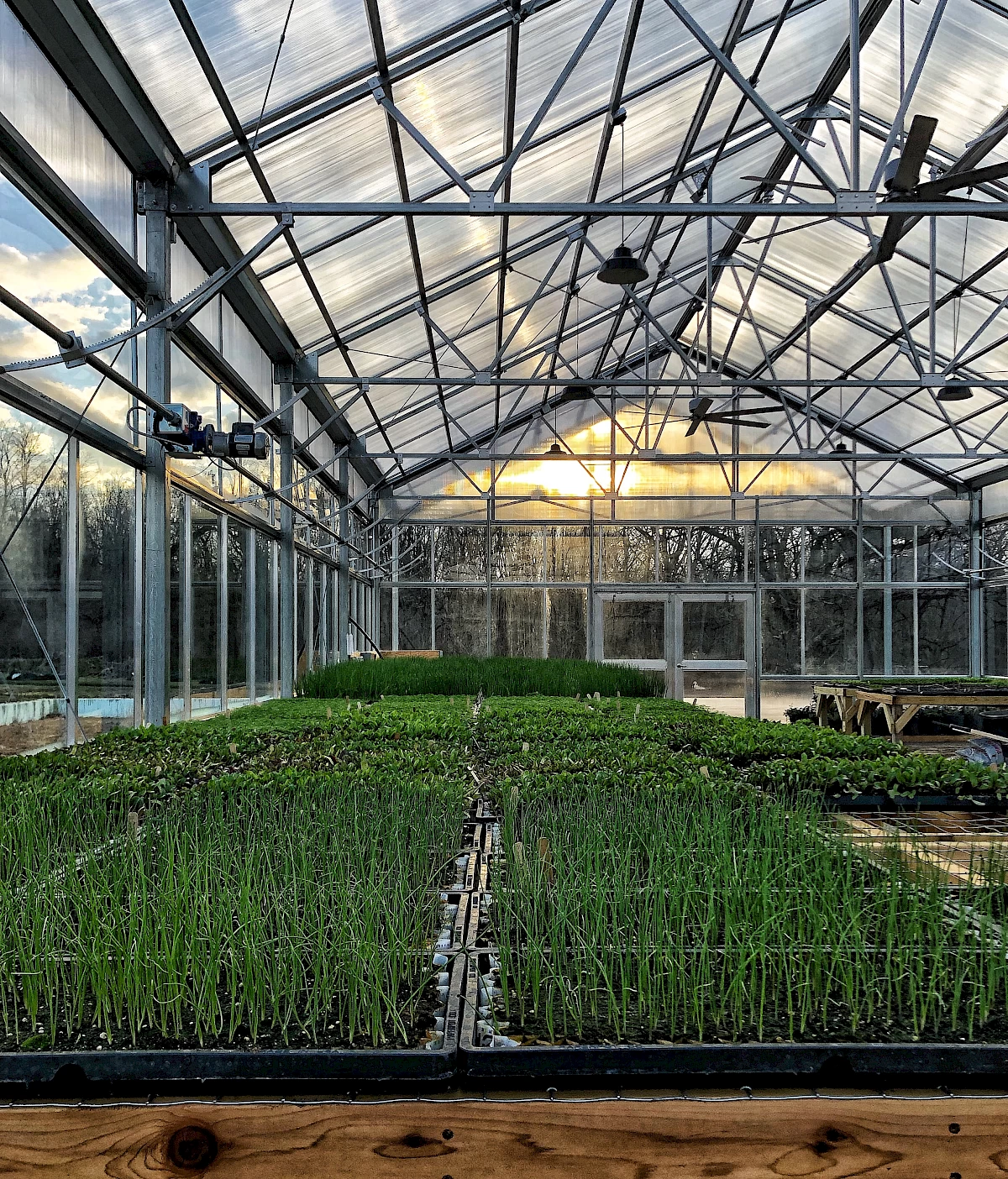Winter
November-January
- Water transplants and check over winter crops daily.
- Check storage crops weekly, discarding old or rotten items.
- Clean and organize barn, glass house, little barn and basement to be ready for coming season.
- Check propane levels weekly.
- Make sure heaters in glass house, hoop house and little barn are on and set.
- Service all vehicles and equipment.
- Develop crop plan for next season.
- Order seeds and materials for next season.
- Inventory and clean tools.
- Brainstorm and plan on how to improve on past year.
Spring
February-May
- Begin seeding transplants.
- Check propane levels weekly.
- Check storage crops weekly, discarding old or rotten items.
- Make sure heaters in glass house, hoop house and little barn are on and set.
- Mow down asparagus and mulch beds.
- Start prepping/amending fields.
- Water transplants and crops as needed.
- Vent or heat houses as needed.
- Cover tender crops if frost is expected.
- Begin setting up irrigation.
Summer
June-September
- Vent houses when needed.
- Close houses when extreme weather is expected.
- Make sure all heaters are off.
- Direct seed/plant transplants.
- Harvest crops when ready.
- Large harvests, potatoes, onions, garlic and watermelons.
- Check fields and crops daily, watering when needed.
- Mow/weedwhip around fields weekly.
- Monitor for pests, spraying when needed.
- Cultivate.
- Check transplants morning, midday and end of workday.
Fall
October-December
- Large harvests, winter squash and storage crops.
- Cover crop or tarp finished fields.
- Monitor weather and heat or vent houses as needed.
- Check fields and crops daily, watering when needed.
- Mow down finished crops.
- Take soil samples.
- Start taking down and putting away irrigation.
- Cover tender crops if frost is expected.
- Check transplants morning, midday and end of workday.

